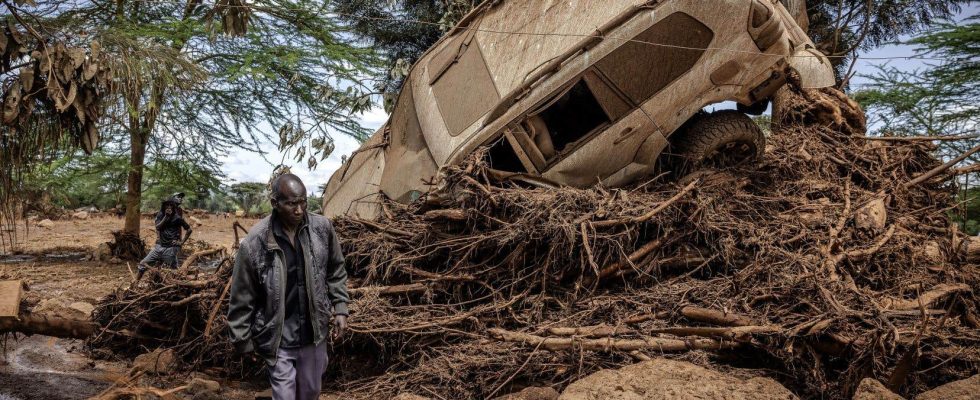At least 45 people have died in central Kenya after a natural dam burst under the effect of torrential rains which have been hitting the country for several weeks.
This tragedy brings to more than 120 deaths the toll of a particularly deadly rainy season in the country, where the El Niño climatic phenomenon amplifies precipitation.
“So far, 45 bodies have been found […]”, the team on the ground is overwhelmed but the search continues,” a senior police officer from Nakuru County told AFP.
Located on a hill, the Old Kijabe Dam, near the town of Mai Mahiu located about a hundred kilometers northwest of Nairobi, was formed naturally over decades, after the construction of a railway line by the British colonial authorities.
During the night from Sunday to Monday, its earthen buttresses gave way, spilling water from the adjacent reservoir onto the houses and roads located below.
“We heard the flood of water coming down the hill around 1 a.m. (local time), it swept away everything in its path. We recovered some bodies held by the trees and we do not know how many are under the mud,” said resident Stephen Njihia Njoroge.
Interior Minister Kithure Kindiki said the government had ordered local authorities to “inspect all public and private dams and water reservoirs in their jurisdictions within 24 hours” and identify “situations where orders for mandatory evacuation and temporary relocation must be issued.”
Back to school postponed
The Minister of the Interior also announced that “risky behavior” would be punished, targeting motorists and pedestrians unconsciously crossing flooded areas or “unscrupulous people […] who endanger the population by building and using (boats) to transport stranded passengers for money.”
Several incidents of this type have been recorded in recent days.
In Tana River County (southeast), the Red Cross announced that it had recovered two dead bodies and rescued 23 people after a boat capsized. Videos on social media showed the crowded boat sinking, its passengers calling for help as helpless onlookers looked on.
On Saturday, the government reported that 76 people had lost their lives since the start of the rainy season in March and that more than 130,000 people had been displaced.
The start of the school year scheduled for Monday, after three weeks of vacation, has been postponed by one week, announced the Minister of Education, Ezekiel Machogu.
“The devastating effects of the rains in some schools are so severe that it would be unwise to risk the lives of students and staff before waterproofing measures are put in place to ensure adequate safety,” he said. declared in a press release.
Region under water
In several East African countries, seasonal rains are combined this year with the El Niño climatic phenomenon, which began in mid-2023 and could last until May, the World Meteorological Organization warned on March 5 (WMO).
In addition to increasing temperatures, El Niño causes droughts in some parts of the world and heavy rains in others.
In Tanzania, at least 155 people have died in floods or landslides.
In Burundi, one of the world’s poorest countries, 96,000 people have been displaced by months of uninterrupted rain, the government and the UN said.
In the Rwandan capital Kigali, a woman and her child were killed on Sunday when their house collapsed, authorities announced, asking people living in risk areas to leave their homes.
In the Ethiopian capital Addis Ababa, four people died in floods and in Uganda, authorities reported two deaths.
El Niño has often wreaked havoc in eastern Africa in the past.
In December, more than 300 people died in various disasters caused by heavy rains in Kenya, Somalia and Ethiopia. In Somalia, more than a million people had been displaced.
From October 1997 to January 1998, gigantic floods fueled by torrential rains caused by El Niño caused more than 6,000 deaths in five countries in the region.
